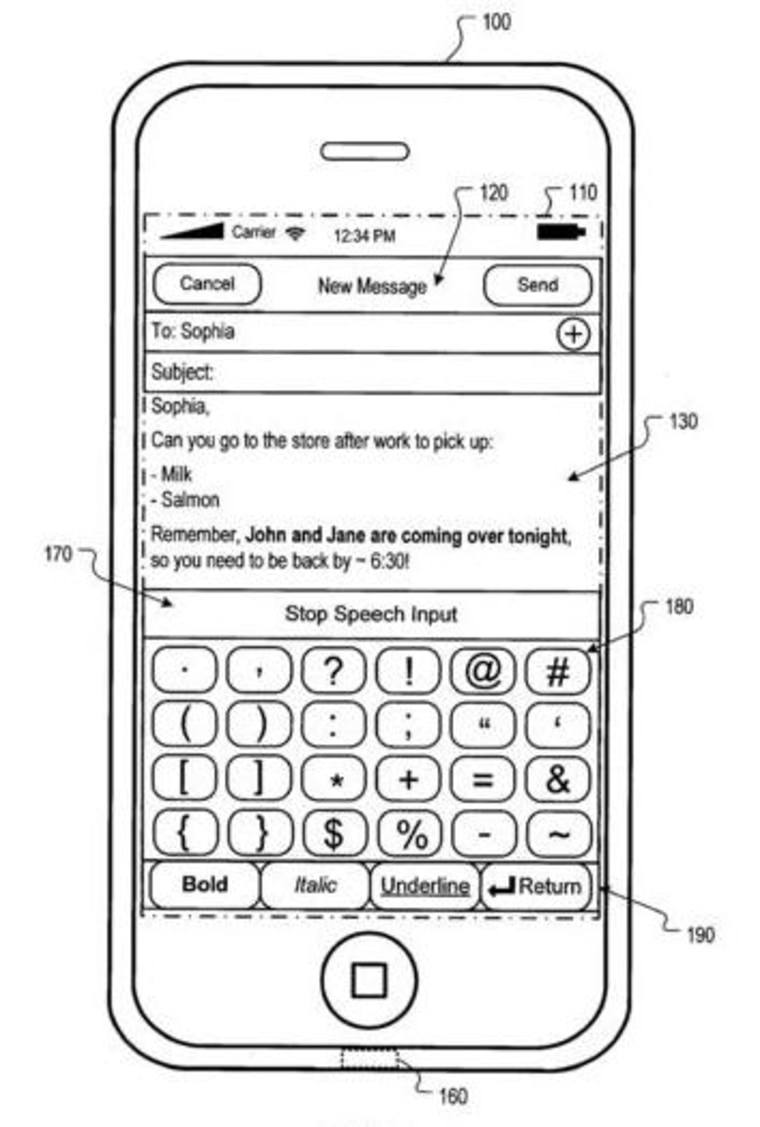"DWD" — driving while distracted — by text messages, e-mails and phone calls is epidemic. And while no one has yet to come up with a technology that would automatically jolt a phone user from touching the device while behind the wheel, speech recognition software may play a role in reducing — but not solving — the problem.
"The trend on banning texting while driving can only help the cause for speech and voice application providers," said William Ho, research director of wireless services at Current Analysis.
Some think that speech recognition could be the new touch for mobile devices, which have been dominated by touch-screen phones since Apple released its first iPhone more than two years ago.
Apple itself is working on a speech-to-text program for the iPhone, according to documents filed with the United States Patent & Trademark Office.
"There's certainly been some refinement and more sophisticated speech-recognition technology" for phones, said John Walls, vice president of public affairs for CTIA, the trade group that represents the wireless industry.
He's quick to add that texting while driving, even with the help of speech recognition, "is irresponsible."
'Next evolutionary step'
And while speech recognition has come a long way, it still has a ways to go. It's a natural, "next evolutionary step" to keyboards, keypads and touch screens, said Kevin Burden, ABI Research's practice director, mobile devices. But it's not there yet.
Voice — while "the most natural communication strategy for people" — is "one of the most difficult pieces of the technology interaction puzzle to set in place," Burden wrote in a recent report.
Even desktop computer speech recognition software, which has advanced significantly, has yet "to achieve the necessary accuracy, reliability or 'natural' experience that users demand," he wrote.
Yet with more limited uses — "Call Joe," or short text messages such as "See you at eight!" — voice recognition software may have a better chance on mobiles than on machines.
There's a growing number of speech recognition programs for phones. Some, such as Google Voice Search and Tellme, a subsidiary of Microsoft, are free and provide Web search by voice. (Msnbc.com is a joint venture of Microsoft and NBC Universal.)
Other programs involve one-time purchases, such as Vlingo Plus ($17.99 for BlackBerry, for example), or are subscription based, such as Voice on the Go ($5.99 monthly), and offer more expansive features such as speech-based text-messaging and e-mails.
"This app is great for those of us whod (sic) rather not txt and drive at the same time ... guilty as charged," wrote one user about Vlingo Plus on the BlackBerry App World site.
"The only downside is that you have to dedicate a side convenience key & hold it while you speak, which I found takes practice," said another in a review of the program. "That doesn't make it practical for texting while driving (which NO ONE should EVER do anyway)."
15-second audio text messages
Voice on the Go is one of the more full-featured speech-recognition programs, letting users get, listen to and send e-mail and 15-second text messages by voice. Your Facebook status can also be updated that way, and you can even send tweets to Twitter using your voice.
The program works on all cell phones, the company said. Using it requires first dialing a local number, then saying or entering a PIN to activate Voice on the Go.
Tellme, whose voice search programs work on a number of different phones, will have a speech-to-text message application as part of Windows Mobile 6.5 operating system for phones, due out in October.
Users will also be able to speak the name of a contact in their address book and place a call that way.
"We certainly believe that voice is the new touch," said Marcello Typrin, Tellme's director of product management. Microsoft acquired the company, founded in 1999, two years ago.
Tellme's voice-based Web search is on Samsung's Instinct phone, for example, and "what we're seeing is about 75 percent of all the search queries on the Instinct are done using voice, not text, which we think is testament to the power of a voice interface.
"If you think about a search box that you need to fill in, say, using your phone to find a restaurant, you know what that's like to have to tap that information in," he said. "It could take 10, 15, 20 keystrokes, and that's a hassle, even if you're just sitting at your desk and focused on your phone. Instead of doing 20 taps on your keyboard, you can just say the name of the restaurant and you're off and running. It's easier, faster, more efficient."
Multitasking help (not driving)
Not surprisingly, the majority of smartphone users "spend more than half of their time in multitasking situations, where they're focusing not only on their phone, but on other activity away from their phone, and where speech makes a lot of sense," Typrin said.
Among them: "You're walking down a street or walking from your driveway into the front door of your house," and using speech-to-text to take your eyes off the phone and onto the pavement in front of you, he said.
Driving? Not so much. The company is looking at a voice program that would read e-mails to the user, but knows that for both texting and e-mail, speech recognition is not a solution for drivers.
Ten states and the District of Columbia now ban texting and driving, according to the Governors Highway Safety Association. Nine more states are slated to impose similar prohibitions in the months ahead.
"We know that the driving use case is an important one, and it's also one that you have to get really right to have it work" when it comes to speech recognition, Typrin said.
"We have to look at does it help the driver or is it potentially distracting as well?"
